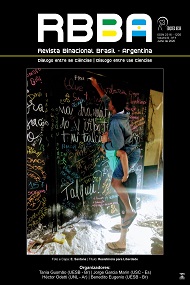THE USE OF GAMIFICATION WITH A GENDER PERSPECTIVE IN THE CLASSROOM: DIFFICULTIES AND BENEFITS
DOI:
https://doi.org/10.22481/rbba.v9i1.6959Keywords:
Gamification, Methodology, Video game, GenderAbstract
The following article aims to employ the use of gamification in the classroom through a gender perspective. The socio-cultural context changes continuously and, therefore, teaching practices need to evolve as society demands changes in this era of empowerment of discriminated social groups. This whole situation conflicts with the educational helplessness offered by national education curricula, since they do not protect teachers when it comes to dealing with this socio-cultural disconnect with students. To solve this problem, it is proposed to use the gamification in the classroom, in order to connect the teaching practice to the student's; social universe. Throughout this article, several concepts will be developed about what gamification means, how it influences teaching practice and how it can be implemented in teaching units. To conclude, the characteristic components of cultural industries will be analyzed and an interpretation will be made of how these products cause a gender bias and how the media message can be acquired for use in the gamified classroom.
Downloads
References
AARSETH, E. Doors and Perception: Fiction vs. Simulation in Games. Intermédialités / Intermediality, (9), 35–44. (2007). Disponible en: doi.org/10.7202/1005528ar.
BOGOST, I. “Why Gamification is Bullshit”. 2014. Disponible en: bogost.com/writing/blog/gamification_is_bullshit Acceso en: 20 feb.2019.
CHARSKY, D. Characteristics from Edutainment to Serious Games: A Change in the Use of Game. Games and Culture.2010. Disponible en: doi.org/10.1177/1555412009354727. Acceso en: 20 feb.2019.
CRAWFORD, G. et Muriel, D. Video games as Culture: considering the role and im-portance of videogames in contemporary society. Ed: Routledge Abingdin, Oxon: New York,2018.
DETERDING, S., Dixon, D., Nacke, L. E., O'Hara, K. y Sicart, M. Gamification: Using gamedesign elements in non-gaming contexts. Conference on human factors in computing systems (pp. 2425-2428). New York: ACM. 2011. Disponible en: doi:10.1145/1979742.1979575. Acceso en: 20 feb.2019.
DETERDING, S., Dixon, D., Khaled, R. y Nacke, L. From game design elements to gamefulness: Defining "gamification". Proceedings of the 15th international academic MindTrek conference: Envisioning future media environments (pp. 9-15). 2011. New York: ACM. Disponible en: doi:10.1145/2181037.2181040. Acceso en: 20 feb.2019.
FUCHS, M; Fizek,S; Ruffino Paolo; Schrape, Niklas (editors). Rethinking Gamification. Lüneburg: Meson Press, 2014.
KAPP, K. M. The gamification of learning and instruction: Game-based methods and strategies for training and education. San Francisco: Pfeiffer,2012.
KAPP, K. M. Gamification designs for instruction. en C. M. Reigeluth, B. J. Beatty & R. D. Myers (Eds.), Instructional design theories and models (pp. 351-384). New York: Routledge, 2016. Disponible en: doi:10.4324/9781315795478. Acceso en: 20 feb.2019.
MORA, M. La teoría de las representaciones sociales de Serge Moscovici. Athenea Digital.2002. Disponible enhttps://atheneadigital.net/article/view/n2-mora/55-pdf-es
LABRADOR, E. J. Sistemas gamificados mejorados a través de técnicas de experiencia de usuario.2020, 203 f. Tesis (Doctorado en Tecnologies de la Informació i les Comunicacions i la seva gestió) Escola Tècnica Superior d’Engenyeria en Electrònica i Informàtica Engenyeria i Arquitectura La Salle, Universitat Ramon Llul, Barcelona.
LEE, J. J. & Hammer, J. Gamification in Education: What, How, Why Bother? Academic Exchange Quarterly, 15(2). (2011). Disponible en https://www.researchgate.net/publication/258697764_Gamification_in_Education_What_How_Why_Bother. Acceso en: 20 feb.2019.
PÉREZ, S. Situando los imaginarios sociales: aproximación y propuestas. Imagonautas. (2017) Disponible en http://imagonautas.webs.uvigo.gal/index.php /imagonautas/issue/viewIssue/28/31. Acceso en: 20 feb.2019.
PINTOS, J. L. Algunas precisiones sobre el concepto de imaginarios sociales. Revista Latina de Sociología. 2014. Disponible en: https://ruc.udc.es/dspace/handle/2183/14482. Acceso en: 20 feb.2019.
SCHUTZ, A. El problema de la realidad social. Buenos Aires: Ed: Amorrortu, 2015.
ZICHERMANN, G. y CUNNINGHAM, C. Gamification by design: Implementinggame mechanics in web and mobile apps.Beijing: O'Reilly, 2011.












